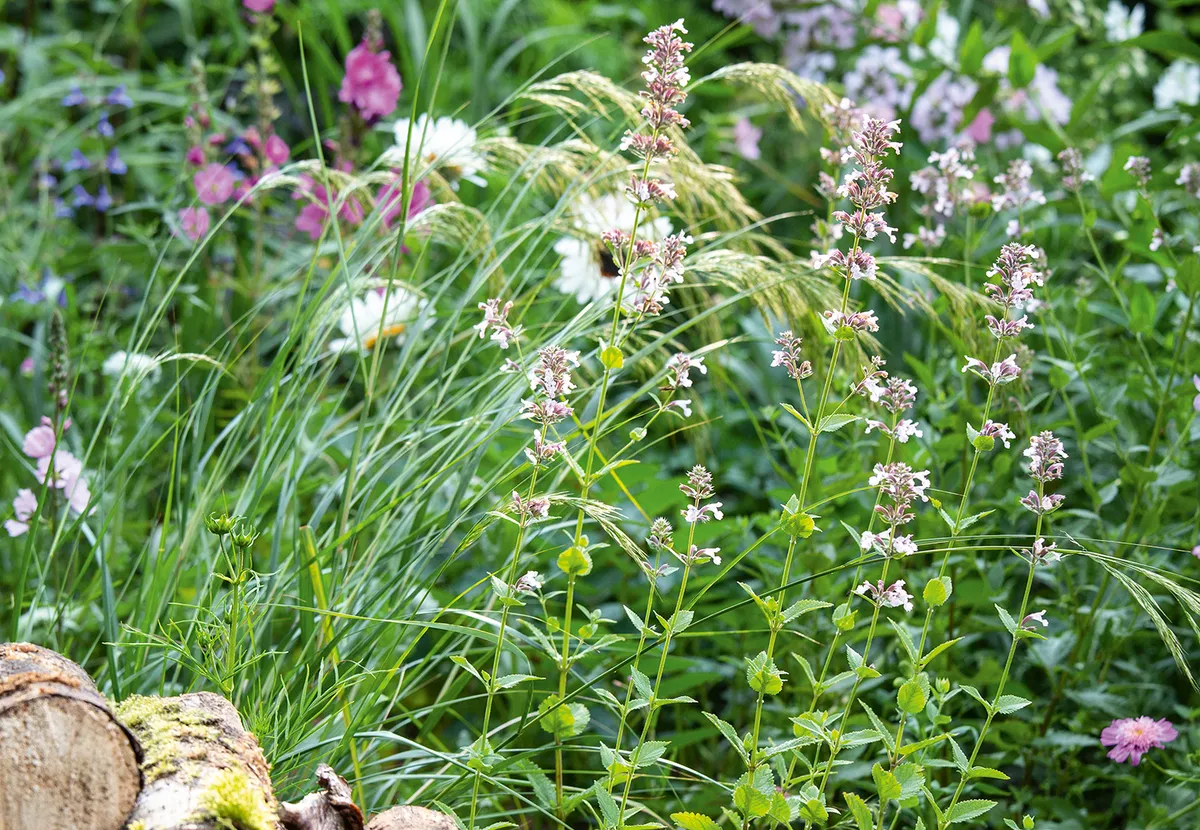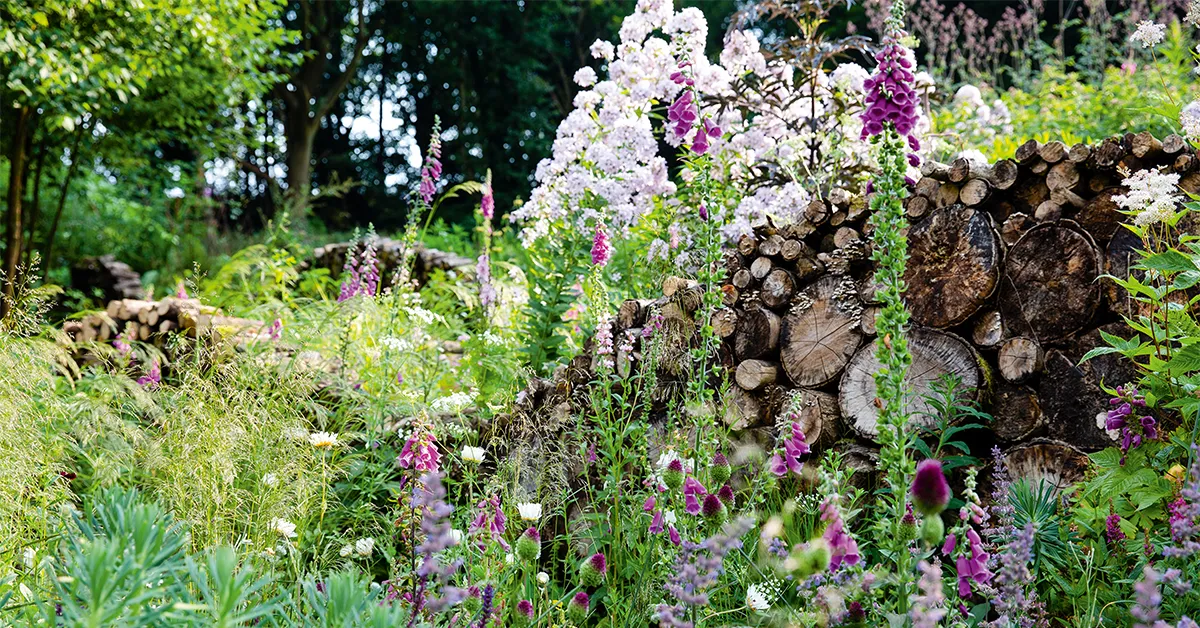Cut less, and cut later. These are the very welcome headlines from the new national guidelines on managing roadside verges, published by the conservation organisation Plantlife at the end of September 2019. They emphasise just how important this is by making the point that ‘grassy verges’ cover an area that is equivalent to all of our remaining lowland species-rich grasslands. Only a fraction of these verges really need to be mown short throughout the growing season, and to be sure, much of this regular cutting is done as a matter of unthinking routine – because it’s always been done that way.
How much of our lawn area do we really need to keep permanently short?
I wonder how much of that same thinking applies to our gardens? How much of our lawn area do we really need to keep permanently short? I reckon if you did a really rigorous audit, then for most of us, even in the smallest of gardens, the answer might be not all of it. In my own garden this year I reckon I have halved the amount of lawn that I have cut, and I have ‘rewilded’ the rest, not cutting at all until the middle of September. I have been amazed at the flowers that have come up, and at the hazy beauty of the flowering grasses. But it has been really noticeable that these uncut areas have been full of insect life (even when the flowers have finished).
While we are ripping up the rule book when it comes to garden lawns, we can take it further and also rip up the rule book when it comes to garden meadows. Much of the guidance for how to maintain a meadow comes from the agricultural set-up, when grasslands were cut in summer to take a hay crop. But in gardens we are not trying to be farmers, and there is absolutely no reason for cutting back too early (i.e in late July or August) – at this time the meadows will still be a great refuge for invertebrates (and in my garden, frogs). I don’t cut until the autumn. And the great joy of working with meadows in gardens is that we can make and manage garden meadows. In other words we can add things, create amazing visual effects, and if we want to, go beyond what you might find in the countryside.
In my rewilded lawns I have planted, for example, hardy geraniums, persicarias, Shasta daisies as well as oxeye daisies – all fairly vigorous plants with leafy flower stems – plants that can compete with the taller grasses – delicate rosette forming plants might get swamped. Between them, I have flowers from May to October in the tall grassland that once was lawn, and it’s much more straight-forward than trying to make a meadow from scratch or from seed.
I like to think of a meadow aesthetic that encompasses a whole gradient or continuum of approaches, from pure nature conservation meadows that reflect our native plant communities, through to sparkling flower-rich designed meadows, and studied meadow-like plantings. They all bring with them a more relaxed way of gardening that brings us closer to nature, with endless other benefits. So yes, cut later, cut less, and be creative and liberal with the garden meadow aesthetic.






